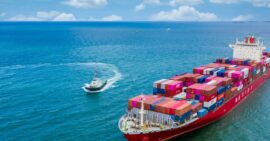Singapore joins China and Thailand by ratifying RCEP.
Almost 100 days after RCEP was signed, China ratified the historic, Regional Comprehensive Economic Partnership (RCEP) agreement. Just 30 days after China signed off, Singapore ratified RCEP. Singapore, China and Thailand emerged as one of the few member countries to do so from RCEP’s 15 participating economies that includes 10 ASEAN countries and Australia, China, Japan, New Zealand and South Korea.
What is RCEP?
It is among the largest trade agreements covering 30% of Global GDP. It is a modern trade agreement covering Asia like CPTPP. Experts say RCEP trade bloc will generate significant economic gains and can potentially add $500 Bn to world trade by 2030.
“Singapore’s expeditious ratification of the Regional Comprehensive Economic Partnership agreement signals Singapore’s strong commitment to strengthening our trade and economic linkages with our partners, for the benefit of our businesses and people.”
– Chan Chun Sing, Minister for Trade and Industry Singapore
The swiftness with which Singapore acted proves to show that FTAs are becoming highly attractive, critically more to C-suite. We are waiting to see who is next – Will Australia, Japan, South Korea, the heavyweights among member list ratify RCEP soon? Seeing China, Thailand, and now Singapore act quickly, other nations may join the race and approve RCEP this year.
Foundation of Trade in Asia
Japan, one of the largest manufacturers in the region, has already given the green light to a bill to ratify RCEP in February this year.
“The Regional Comprehensive Economic Partnership (RCEP), which will cover a third of global trade and population, making it the world’s largest FTA, will become the “foundation of trade in Asia.”
– Japanese Trade Minister Hiroshi Kajiyama at a press conference
When fully leveraged by enterprises, it is no secret that RCEP and other trade agreements can bring transformational benefits.
What can enterprises do while other nations sign off on RCEP?
Playing the wait and watch game can prove costly while your competitors and peers are catching up and preparing for RCEP.
Identifying which agreements are best for you and how can RCEP reduce your product costs or landed costs is a key question? If you are an exporter, are you prepared to take advantage and are you geared to change your supply chain? Have you identified which trade scenarios will enable you?
These are questions that just touch the surface. Companies, especially exporters and manufacturers across Asia Pacific, must start exploring solutions.
What action can you take? Top 3 suggestions:
- Review your existing trade flows across RCEP Member countries
- Consider which FTAs you are using today and where new opportunities exist
- Evaluate RCEP to consolidate your FTA Footprint and expand your FTA reach
Make optimal use of all trade agreements available to your business.
Schedule a consultation with us today.
This post is written by Zoe Martinez, Proposition Lead – Global Trade, Asia & Emerging Markets, Thomson Reuters.


